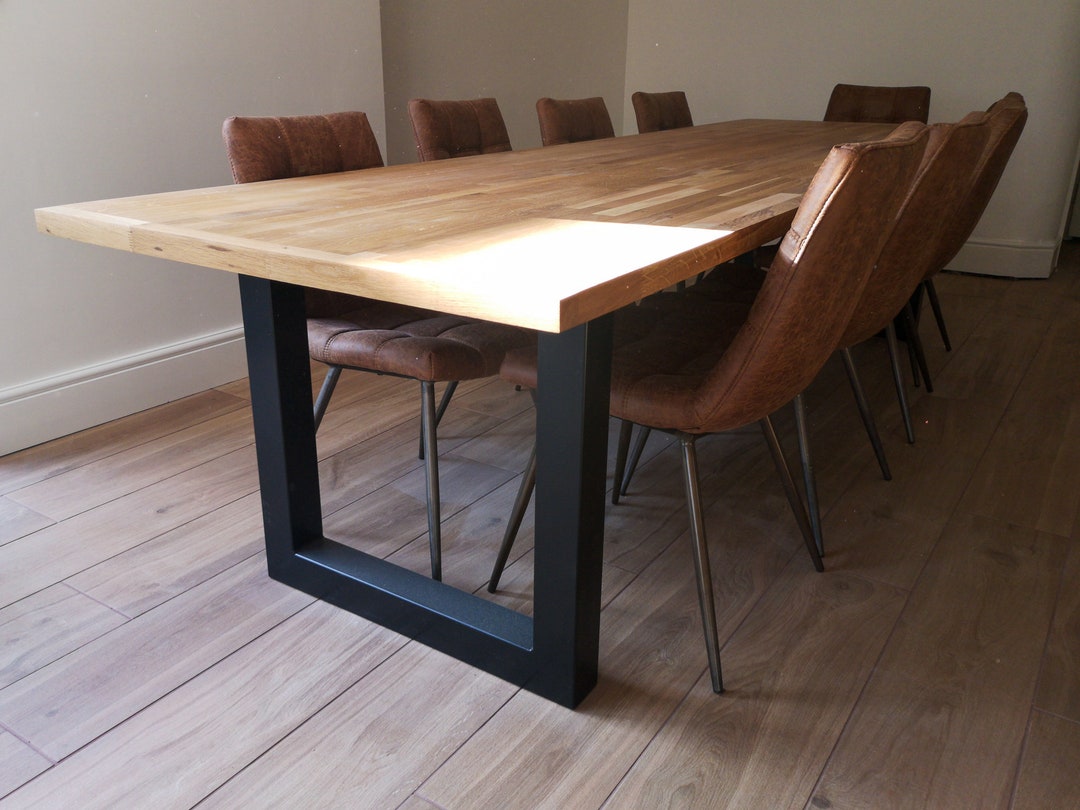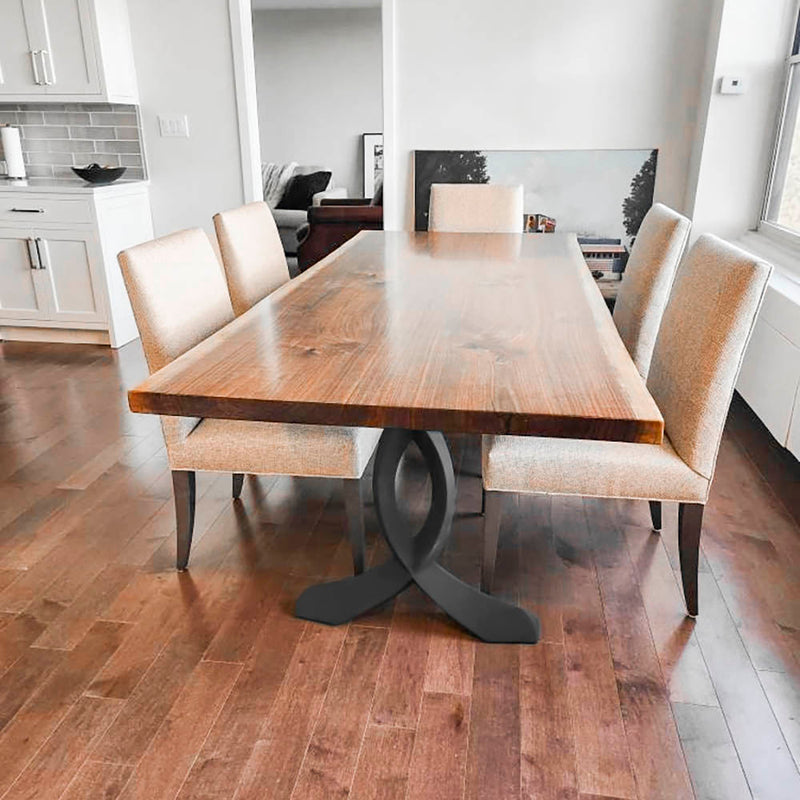Why Custom Dining Room Table Legs Are Worth the Investment
Why Custom Dining Room Table Legs Are Worth the Investment
Blog Article
Just How to Pick the Perfect Dining-room Table Legs for Your Home Decor
Picking the optimal dining area table legs is a nuanced process that needs careful consideration of numerous elements, including your area restrictions, aesthetic choices, and sensible requirements. The interaction in between designs, products, and measurements can significantly affect the setting of your eating location, making it necessary to approach this decision carefully.
Assess Your Eating Room
Analyzing your eating area is crucial for choosing the right table legs that match both appearances and performance. Begin by measuring the dimensions of your eating location, including ceiling height, flooring space, and proximity to various other furnishings. This info will certainly assist figure out the ideal dimension and elevation of your eating table, which directly affects the selection of table legs.
Next, take into consideration the style and design of your dining area. As an example, an open-concept layout may take advantage of table legs that supply aesthetic agility, such as slender steel or acrylic alternatives. On the other hand, an extra standard setup might require strong wood legs that provide a feeling of permanence.
Evaluate the existing color scheme and materials in your dining area. Integrating the table legs with these components produces a natural look that boosts the general design.
Ultimately, a comprehensive evaluation of your eating space will certainly direct you in making an educated choice, guaranteeing that your table legs not only improve the visual appeal however also offer useful objectives.
Consider Your Style Preferences
When selecting eating area table legs, it is important to assess your personal style choices, as they considerably influence the total aesthetic of your dining space. Your option of table legs can either enhance or comparison with existing decoration, making it important to align them with your preferred interior style theme.
If your home leans in the direction of a modern-day aesthetic, consider streamlined metal or minimalist wooden legs that supply a tidy, uncluttered look. For a more standard method, elaborate wooden legs with elaborate carvings can add a touch of beauty and refinement. Industrial designs gain from robust, basic materials such as redeemed timber and steel combinations, reflecting a rugged beauty.
Furthermore, farmhouse and rustic styles frequently prefer durable, chunky legs that evoke a sense of heat and comfort. On the other hand, if your decor is eclectic, you could choose unusual shapes or a mix of products to develop visual interest.
Evaluate Product Options
The choice of product for eating room table legs plays a pivotal function in both resilience and aesthetic appeal. Common products include timber, metal, and composite choices, each offering distinct qualities that can affect the general look and long life of your table.
Wood is a timeless choice, recognized for its heat and convenience. Woods like oak and walnut give exceptional stamina and can be ended up in numerous discolorations to match any decor. However, softwoods like yearn are extra vulnerable to scrapes and dents, making them much less perfect for high-traffic areas.
Steel legs, frequently crafted from steel or aluminum, radiate modernity and commercial beauty. They are resistant and highly durable to use, making them suitable for families with children or frequent celebrations (dining room table legs). Additionally, steel can be finished in various colors, boosting the personalization opportunities
Composite products, such as MDF or laminate, deal cost and varied layouts. While normally less long lasting than solid wood or metal, they can still provide a trendy appearance and are often simple to preserve.
Eventually, the material you choose must line up with your way of living, visual preferences, and the degree of usage your table will experience.
Determine Elevation and Size
Selecting the suitable height and size for your dining area table is important for both capability and convenience. The conventional height for eating tables typically varies from 28 to 30 inches, allowing enough legroom for a lot of individuals when seated. Nevertheless, it is crucial to consider the dimensions of your dining area and the types of chairs you plan to use.

Furthermore, consider the percentages of your eating space. A bigger table in a roomy location can develop a grand setting, while a smaller sized table works well in even more intimate setups. Ultimately, the appropriate height and dimension will certainly integrate with your general style and enhance the dining experience for you and your visitors.
Explore Personalization Opportunities

Additionally, the design of the legs can be personalized to fit various designs, such as rustic, modern-day, or commercial. For instance, conical legs can evoke a mid-century contemporary feel, while beefy, block-style legs may resonate with traditional or farmhouse design.
House owners can additionally explore color coatings, from natural timber spots to repaint, enabling them to match or contrast with the table top and surrounding style.
Moreover, leg elevation can be adjusted to suit specific seating plans or personal choices, boosting both convenience and functionality.
Last but not least, one-of-a-kind embellishments, such as carvings or attractive brackets, can better individualize the table legs, making the dining experience not just a statement but a dish item in the home. By thinking about these personalization options, house owners can create a dining-room table that really shows their individuality.
Verdict
Choosing the ideal eating room table legs needs mindful consideration of various variables, including the dimensions of the eating area, design preferences, material toughness, and desired height. Modification options even more boost the capacity to review accomplish a natural aesthetic that complements the total decoration. By methodically reviewing these components, house owners can guarantee that the picked table legs not only meet functional needs yet additionally add positively to the dining experience and ambiance of the home.
Choosing the optimal eating room table legs is a nuanced procedure that calls for cautious consideration of numerous components, including your space restrictions, aesthetic choices, and practical requirements.Evaluating your eating area is important for picking the right table legs that complement both visual appeals and functionality.When identifying dimension, determine the area where the table will be placed to ensure it fits conveniently, permitting for at the very least 36 inches of clearance around the table for very easy movement. A larger table in a roomy area can produce a grand setting, while a smaller sized table functions well in even more intimate setups.Picking the optimal dining area table legs calls for mindful consideration of numerous elements, including the dimensions you could check here of the dining room, design choices, product longevity, and preferred height.
Report this page